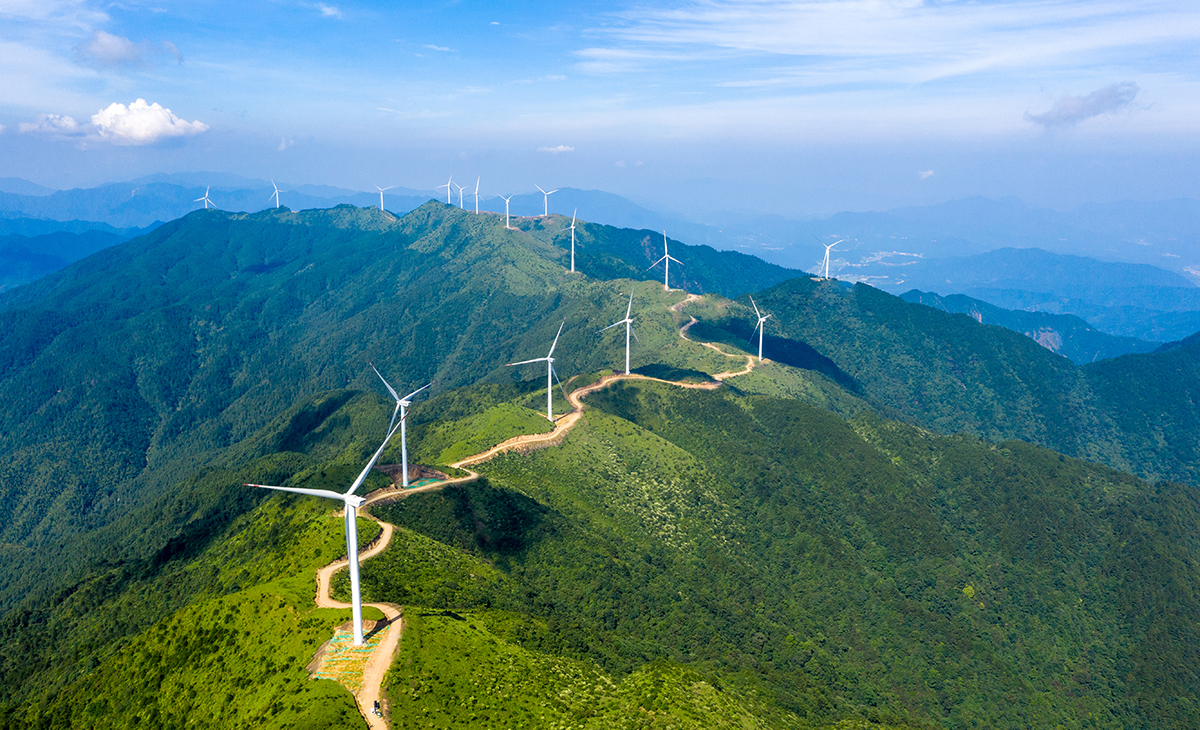In Short : China is accelerating climate action, playing a pivotal role in the global transition to a net-zero world. The nation is investing heavily in renewable energy, electrification of transport, and carbon reduction technologies. By implementing ambitious policies and fostering international collaboration, China aims to contribute significantly to the collective effort against climate change.
In Detail : Chinese firms dominate green industries from renewable energy to electric vehicles, China’s Belt and Road Initiative promotes green projects and even its e-commerce push brings energy savings
In the face of worsening climate anxieties, the hard-earned Cop28 Dubai consensus to transition away from fossil fuels has been hailed as a historic breakthrough, notwithstanding small island nations’ fears for their survival amid rising sea levels and some cynicism about the sincerity of vested fossil-fuel interests.
What is certain, however, is China’s accelerating role in driving the global momentum towards carbon neutrality in the coming decades. There are many reasons.
In September 2020, President Xi Jinping pledged that China would achieve peak carbon emissions before 2030 and carbon neutrality before 2060. At the central economic work conference in Beijing earlier this month, ecological conservation and low-carbon development were highlighted as priorities.
Besides ecological concerns, it is in China’s national security interests to minimise its dependence on fossil fuel imports, and therefore be less vulnerable to choke points such as the Persian Gulf (vulnerable to Middle Eastern conflicts) and the Malacca Strait (controlled by the US Seventh Fleet).
This year, for the first time, global investment in solar power has exceeded spending on oil production. China produces 85 per cent of the global solar cell supply, 88 per cent of solar-grade polysilicon and 97 per cent of silicon ingots and wafers. Photovoltaics are the “new oil” and China has maintained its predominance, notwithstanding the US Inflation Reduction Act and the EU’s green “de-risking” initiatives.
Chinese manufacturers also dominate in wind power, occupying 60 per cent of the wind turbine market. China has 44 per cent of the world’s offshore wind capacity, growing to 31 gigawatts last year, surpassing Europe to take the No 1 spot. China is also developing megawatt floating power generators that harness wave energy, a technology that could benefit small island states in particular.
To handle the intermittency of solar and wind power, China is fast-tracking its development of smart grids, deploying cutting-edge metering infrastructure and supervisory control and data acquisition systems. Its smart grid market is expected to grow at a compound annual rate of 14 per cent from 2022-2027. Smart grids are vital in the green energy transition.
China’s offshore and onshore wind energy generation capacity is more than 310GW, roughly equal to the capacity of the next seven countries combined. Its solar power generation capacity exceeds 379GW, more than the rest of the world’s combined.
While the global focus is on solar and wind energies, hydropower remains the biggest renewable energy source for China, accounting for 16 per cent of its total electricity generation in 2020, with wind and solar power accounting for 6 per cent and 4 per cent respectively.
China is five to 10 years ahead of other countries in hydropower and related storage infrastructure, with extensive use of sensors, robots, big data analytics and artificial intelligence.
To meet its gargantuan appetite for energy while transiting away from coal, China relies on nuclear power, with 21 reactors under construction capable of generating 21.61GW, more than 2½ times more reactors than any other country, according to the International Atomic Energy Agency.
Paradoxically, China remains both the problem and the solution to global pollution. It consumes more coal that all other countries combined. According to the International Energy Agency (IEA), China’s coal emissions were 8.6 gigatonnes last year, about 70 per cent of its total, and accounting for a quarter of global energy emissions.
But thanks to China’s rapid shift to renewable energies and a slowing economy, its coal-fired emissions should peak around 2025, dropping to 40 per cent in 2030. Nevertheless, China is expected to remain the largest user of fossil fuels in 2050.
The IEA expects energy efficiency improvements and electrification to drive most of China’s industrial-emission reductions in the short term, “while emerging technologies, such as hydrogen and carbon capture, utilisation and storage, take over post-2030”.
As the world’s largest trader and manufacturer, China is poised to help other nations reduce their emissions through its Belt and Road Initiative, mass production of electric vehicles (EVs) and promotion of e-commerce.
At the Belt and Road forum in Beijing in October, President Xi signalled a pivot towards leaner and greener high-quality projects with an emphasis on financial and ecological sustainability. This sets the stage for greener projects under the initiative, a partnership with 150 countries and 30 international organisations.
According to the IEA, cars and vans accounted for 48 per cent of transport carbon emissions last year, making transport the second-largest polluting sector after the power industry. China has become the new Detroit, with Chinese brands accounting for about half of EVs sold globally, and making 80 per cent of EV batteries.
With the Fourth Industrial Revolution, e-commerce is transforming transactions with huge energy savings in time, travel and delivery. China tops the global e-commerce market, accounting for 34 per cent of global payments last year. The Chinese e-commerce market, worth more than US$2 trillion last year, is expected to grow at an annual compound rate of 11.6 per cent to reach US$3.4 trillion in 2027.
Former Saudi oil minister Sheikh Zaki Yamani famously said in 1973: “The Stone Age did not end for lack of stone, and the Oil Age will end long before the world runs out of oil.” His words are ever more prescient. China is instrumental in this epochal paradigm shift, along with other leading energy-consuming nations, including the United States and the European Union.

